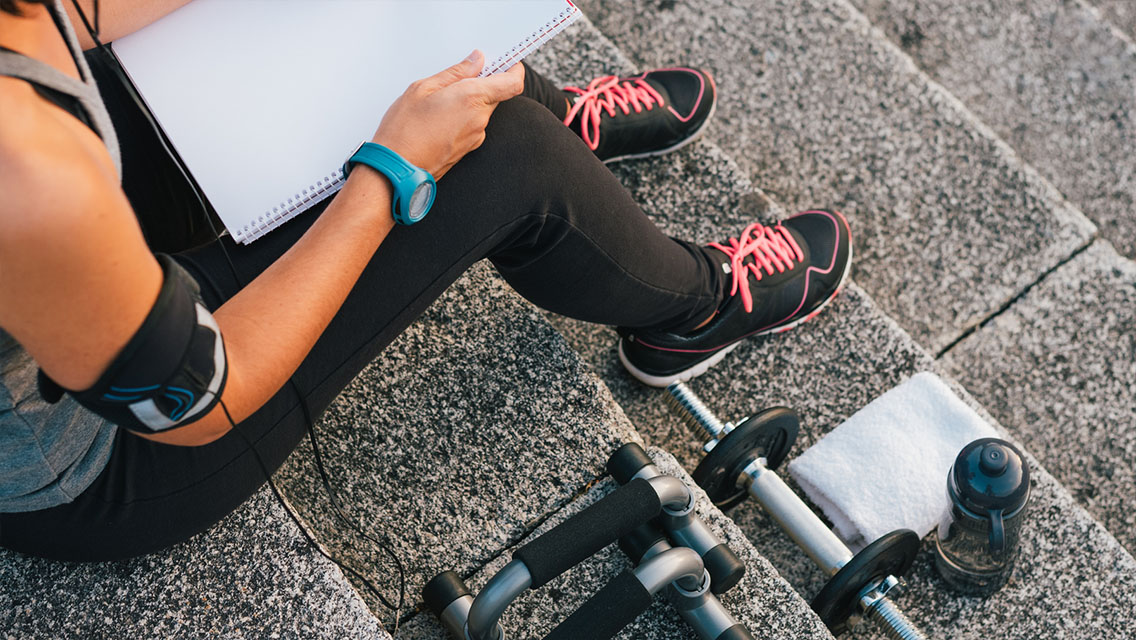Q1: The Best Time to Work Out
What’s the best time of day to work out?
The correct answer is, whenever you will work out.
But here’s the nit-picky answer: In the afternoon your testosterone levels are a few percentage points higher, helping you build muscle and lose fat. Your circadian rhythms also peak then, making you more alert (and warmer). And your spine moves better in the afternoon (there’s more fluid in the discs than when you first wake up), says Josh Hillis, RKC, CPT, PES, celebrity trainer and founder of the blog Lose Stubborn Fat. “All of these sound like great reasons to reschedule those morning workouts,” he notes. But, ever hear the saying, “Don’t sweat the small stuff”? Well, this is small stuff. Really small stuff: “The circadian rhythm and spinal fluid issues can be handled with a slightly longer warm-up,” says Hillis. “And the testosterone difference isn’t big enough to produce a visible change in results.”
So what’s the big stuff? “Look at when your workouts fit in your schedule,” says Hillis. “Anyone with a job, a family, and any kind of social life has to manage his or her schedule carefully to work out consistently.” So pick the time of day that appeals to you and works with your schedule. To get the most bang for your buck whenever you work out, consider (1) exercise selection — pick compound, multijoint exercises; (2) workout intensity — strike a balance between higher and lower; and (3) system adaptations — once your body adjusts to a certain type of workout, mix it up.
Q2: How to Increase VO2 Max
I had my VO2 max tested twice, six months apart. It increased about 10 percent, but I’d like to see more improvement. How can I do that?
First, good for you! Second, just to bring everyone up to speed, VO2 max (or maximal oxygen consumption) is a metric commonly used by physiologists and coaches to measure the body’s maximum ability to consume oxygen and perform exercise. The higher your VO2 max is, relative to your body weight, the more aerobic power you have for endurance sports performance. Elite male endurance athletes typically reach 70 milliliters per kilogram per minute (ml/kg/min.), with elite female athletes around 65 ml/kg/min. The average untrained male, on the other hand, will score roughly 35 to 40 ml/kg/min., and untrained females will score around 30 to 35 ml/kg/min., according to Troy Jacobson, head endurance sports coach at Life Time Fitness in Chanhassen, Minn.
You can continue to improve your VO2 max by following a properly designed aerobic-endurance regimen that includes a variety of training intensities, from low-intensity aerobic base efforts to hard anaerobic intervals. “As you continue to challenge them, your oxygen-delivery mechanisms and cardiovascular functions will improve,” says Jacobson. “Over just a few weeks, untrained people who begin a structured exercise program can see improvements in VO2 max of 5 to 15 percent,” he notes. “Eventually, gains in VO2 max slow, both according to genetic limitations and, if the athlete is competing, according to the time of his or her training cycle.” Weight is also a factor, he adds: VO2 max is calculated using body weight, so the lower your weight, the higher your VO2 max will likely be.
While VO2 max is a good thing to be aware of, most people don’t really require this information to improve their fitness, says Jacobson. Your lactate threshold heart rate (that intensity where your body is on the edge of aerobic and anaerobic metabolism) is more important for establishing proper training-heart-rate zones. To find yours, read “Test Your Endurance.”
Fitness Fix: Track Your Progress
Keeping track of your sets, reps, the amount of weight you lift and the duration of your workouts is a smart and fairly common practice. Less common, however, is the practice of using this information to progress toward your fitness goals. “No need to track every single aspect of your exercise and diet — that can give you too much information to sort through,” says Suzanne Schlosberg, author of The Ultimate Workout Log: An Exercise Diary for Everyone. “Pick a few key items: If you think your problem is inconsistency, track the number of workouts you do each week. If you’re trying to slim down, get a body-fat test and schedule another test for three months later. In the interim, track the information you feel is most key to losing fat, like the number of sodas or sweets you are taking in.”
If you’re just getting started, Schlosberg recommends simply getting a pedometer and tracking your daily step count, aiming for at least 10,000 steps a day, and ideally 12,000. (Research shows that wearing a pedometer motivates people to walk more throughout the day because they’re getting “credit” for it.)
Whatever your goals, note them at the beginning of each week, and then, at the end of the week, tally up your numbers. If you notice you’re consistently falling short of your goals, go back to your data and look for clues as to why. It could be your bench press isn’t improving because you keep doing the same exercises over and over. Or maybe you’re not increasing the weight you use.
Andrea Metcalf, author of Naked Fitness: The Proven 28 Day Lifestyle Program for a Slimmer, Fitter, Pain Free Body (Vanguard, 2010), recommends taking waist, hip, arm and leg measurements, then remeasuring and asking yourself these three questions once a month:
1) Am I progressing? Do your workouts change from week to week? Are you changing the number of reps and sets, and the exercises you do? You can use your past workouts to plan future ones. Take your information to a personal trainer to get ideas about how to adjust your program.
2) Am I feeling it? Note on a scale of 1 to 10 how you feel at the beginning and the end of each workout. If you’re feeling drained beforehand, consider lightening your load somewhat that day.
3) What’s behind me? If you have notes about workouts from a year ago, it can be satisfying to repeat them and see how much stronger you are now. (Online or phone apps can help you keep an electronic record.)
“The notes you make are helpful only if you go back and analyze them. I recommend doing that weekly and monthly, as well as at the six-month mark,” says Schlosberg. “Many athletes do three progressively more strenuous weeks, then drop back for an easy fourth week in both volume and intensity. That’s something else you can plan and track with your log.”





This Post Has 0 Comments